
Samuel is one of those patients who arrive with a long story behind their smile—and you can see it the moment they walk in. In his case, it was three attempts at orthodontic treatment, none of them completed. The result: a smile marked by flared teeth, edge to edge, with no proper alignment. At first glance, it might seem like a purely cosmetic issue, but a closer look revealed much more.
During the clinical examination, we observed significant dental flaring, with inclinations that compromised both function and aesthetics. Before moving forward, we checked to ensure each tooth had solid bone support. Our periodontics team confirmed favorable conditions, giving us the green light to continue.



We explained that pursuing an aesthetic treatment without addressing this unstable foundation could be counterproductive. However, we also understood we were dealing with a patient who, after several failed attempts, no longer considered orthodontics a viable option. We offered him a carefully thought-out alternative—one that respected his decision while still protecting his oral health. At Sonrisa Italiana, we are firm believers in comprehensive, ideal treatments.
But we also recognize that many patients grow tired of repeating the same path and eventually seek more concrete, realistic solutions for their current stage of life. Not all roads lead back to braces. There are ways to build a harmonious smile without starting over.
Gingival Balance: When pink aesthetics matter

One of the key steps in restoring harmony to Samuel’s smile was addressing his pink aesthetics. His gums had adapted to the position of his teeth, appearing disproportionate and detracting from the vertical balance and elegance of his smile.
Dr. Alicia Correa, our periodontics specialist, performed a clinical crown lengthening procedure. Unlike a gingivectomy—which only removes excess gum tissue—crown lengthening may involve reshaping the underlying bone to safely expose more of the tooth structure. In Samuel’s case, the goal wasn’t just cosmetic: we needed a proper biological foundation to ensure long-term stability and functionality of the restorations.
Creating Space: Using vertical dimension as an ally
Another major challenge was the collapse of the lower third of the face. With his teeth tipped forward and meeting edge to edge, there was little room to work with veneers. The solution was to increase the vertical dimension. We achieved this using table tops on his lower molars (teeth 36 and 46), a technique that adds height to the posterior bite without compromising existing tooth structure.
This not only created the space needed for ceramic work, but also helped us reestablish a more harmonious and functional bite, one better protected against future wear.
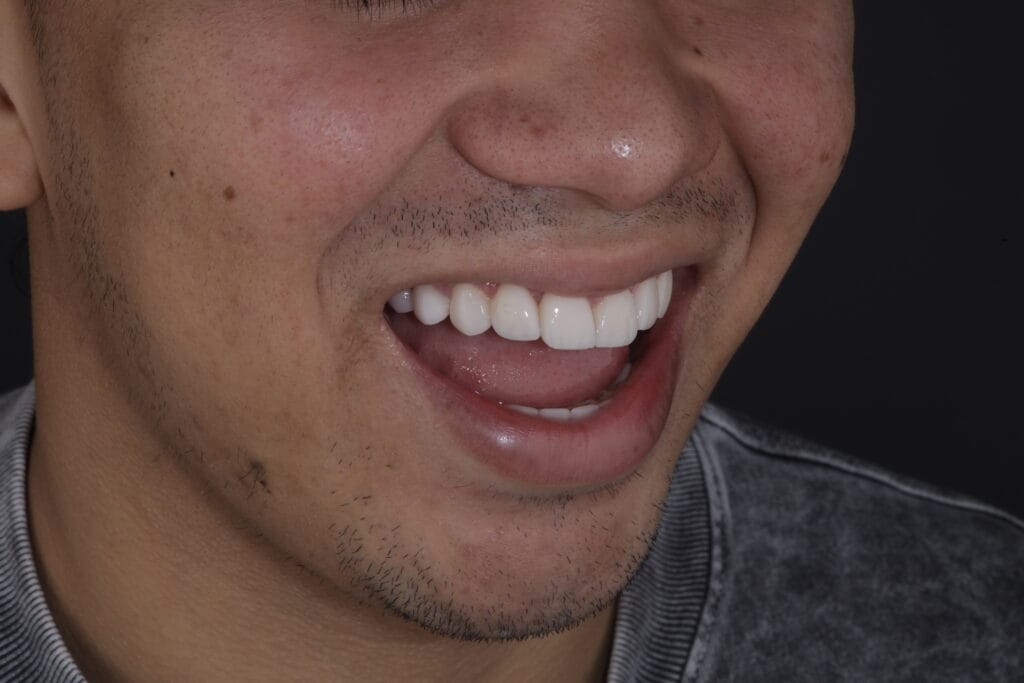
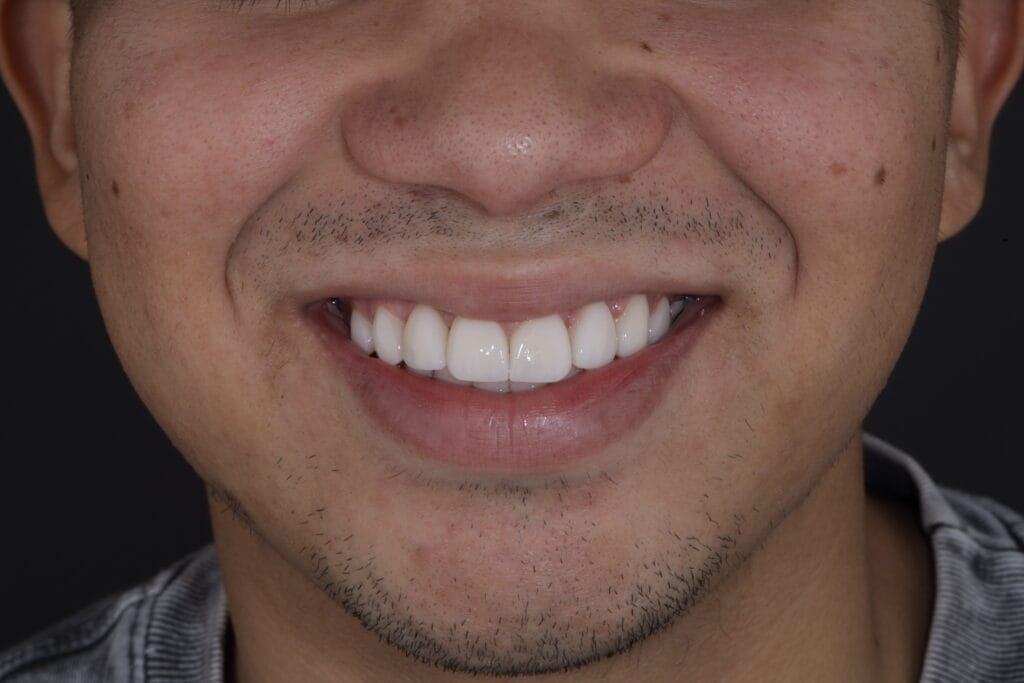
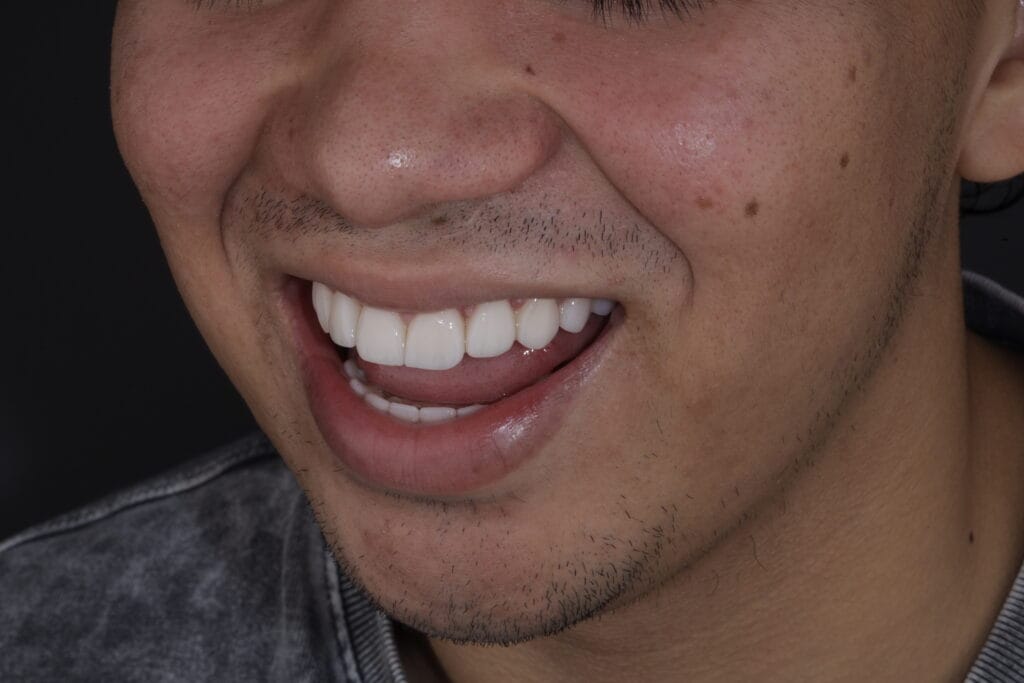
The Final Step: 20 purposeful veneers
The comprehensive plan was led by Dr. Paola Zabaleta, who oversaw each phase of the treatment with a clear vision—from the initial evaluation to the final restorative stage. With healthy gums and an optimized vertical dimension in place, the final stage was aesthetic restoration.
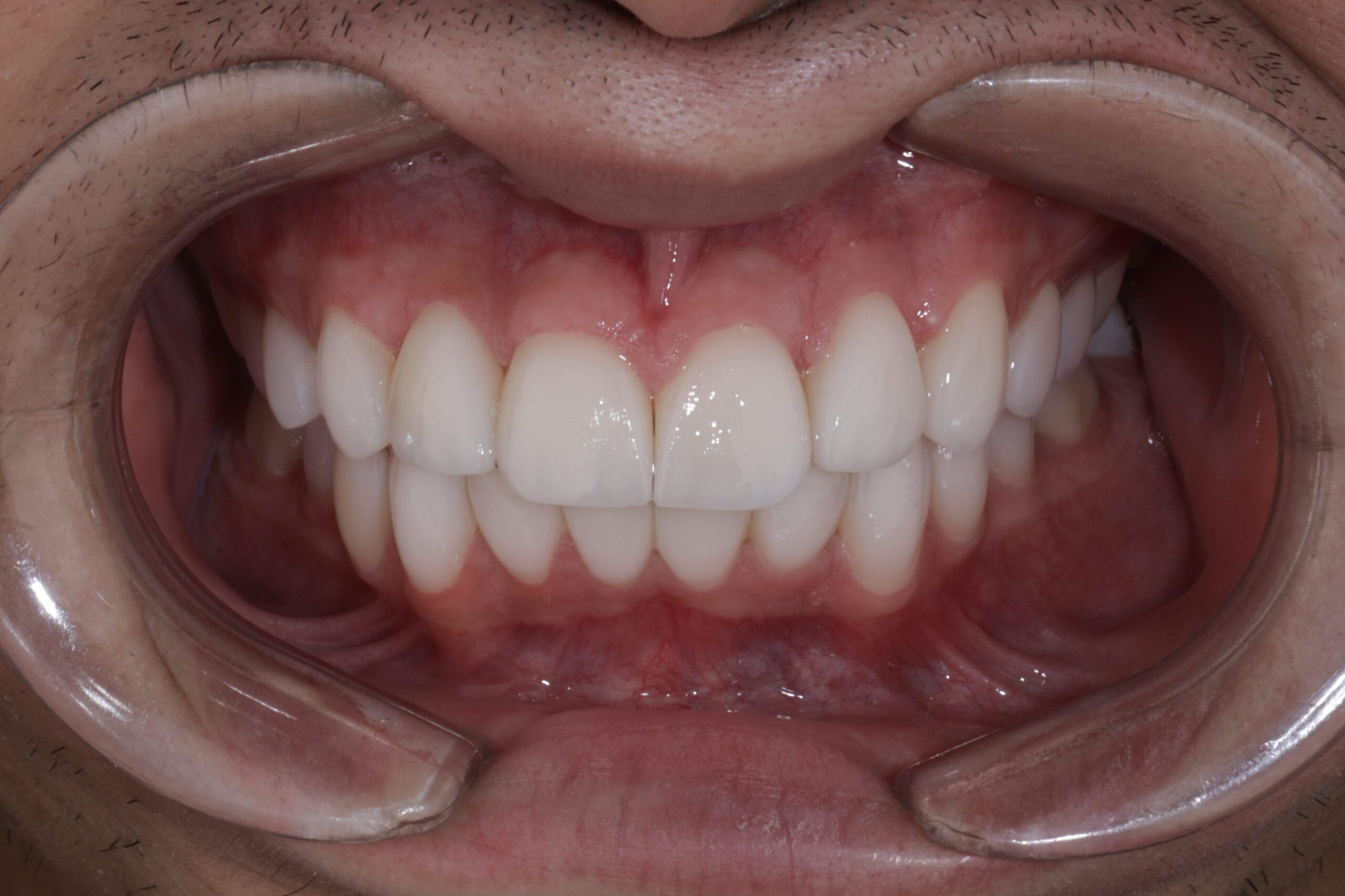
We placed 20 lithium disilicate veneers, covering both upper and lower anterior teeth. We chose this material for its durability, color stability, and natural enamel-like translucency. But beyond its polished surface, what truly stands out in Samuel’s case is that every veneer was designed as part of a complete system—his gums, his bite, his story.
Today, his smile doesn’t just look better. It functions better. It reflects stability and embodies all the care behind each decision made along the way. And while the final result is both aesthetic and functional, Samuel’s initial occlusion requires us to keep him close. Ongoing follow-up will be key to maintaining long-term results, preventing relapse, and ensuring that this new chapter is sustained over time.
At Sonrisa Italiana, we believe the most beautiful smiles aren’t built overnight. They’re designed with purpose, cared for with precision, and maintained through ongoing, intentional care.
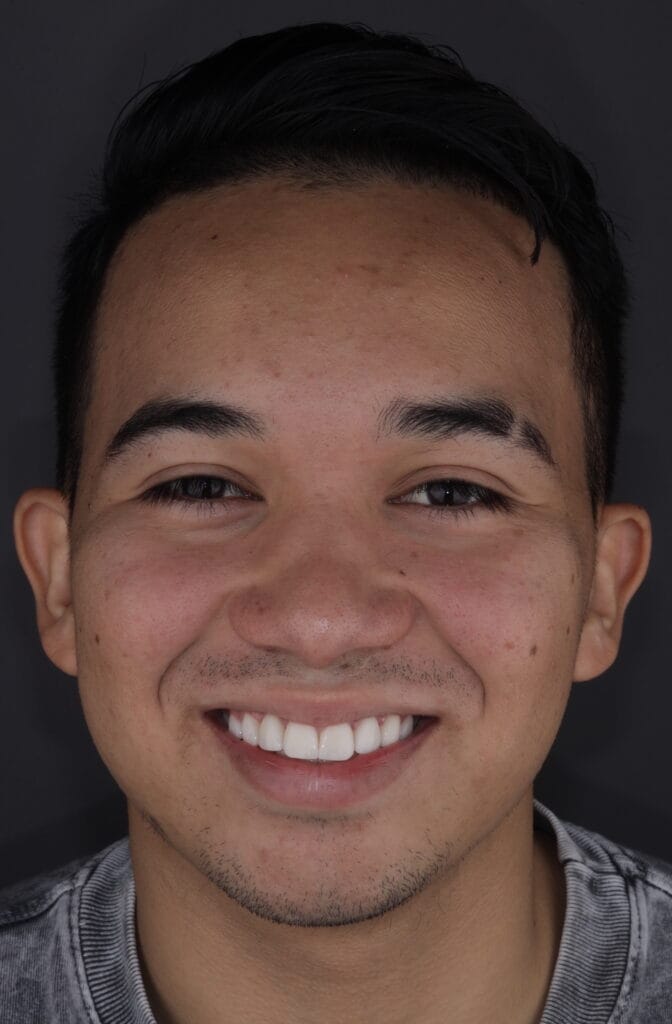
Case review written by Dr. Laura Bula, expert in dental and facial aesthetics


